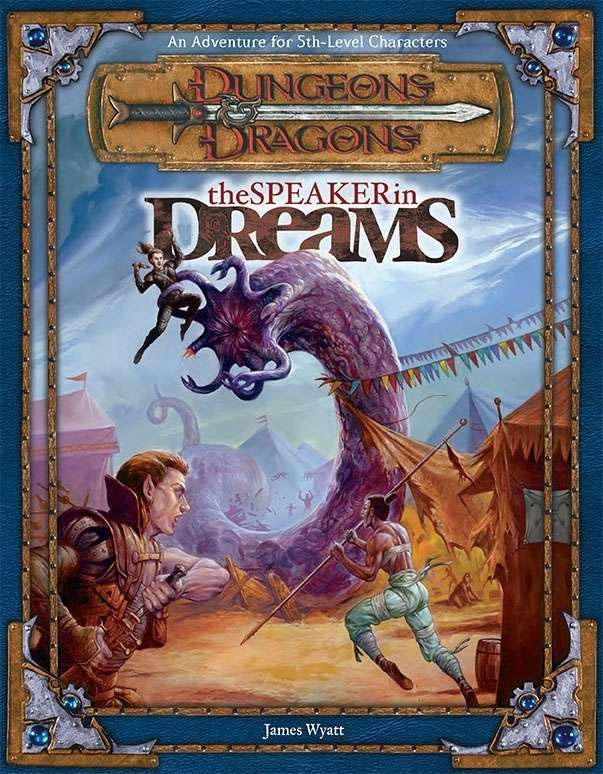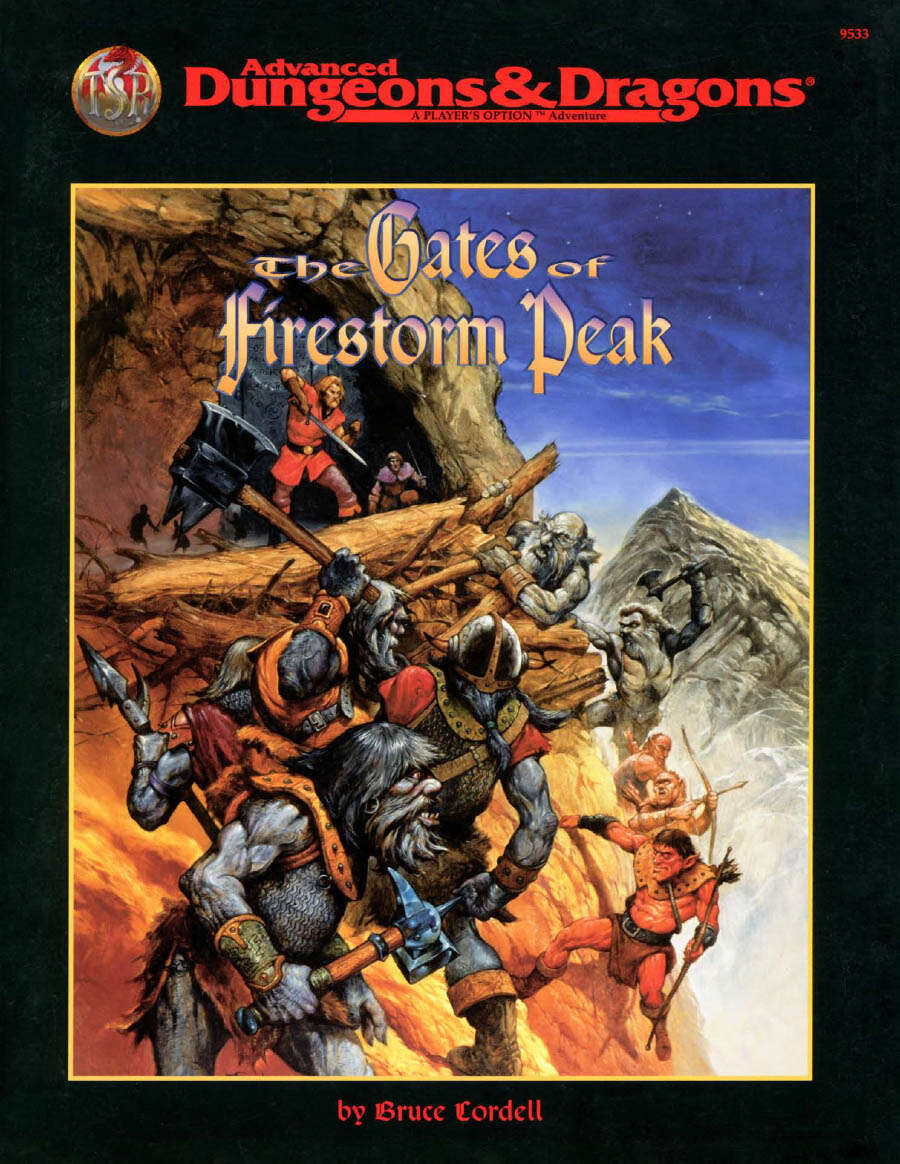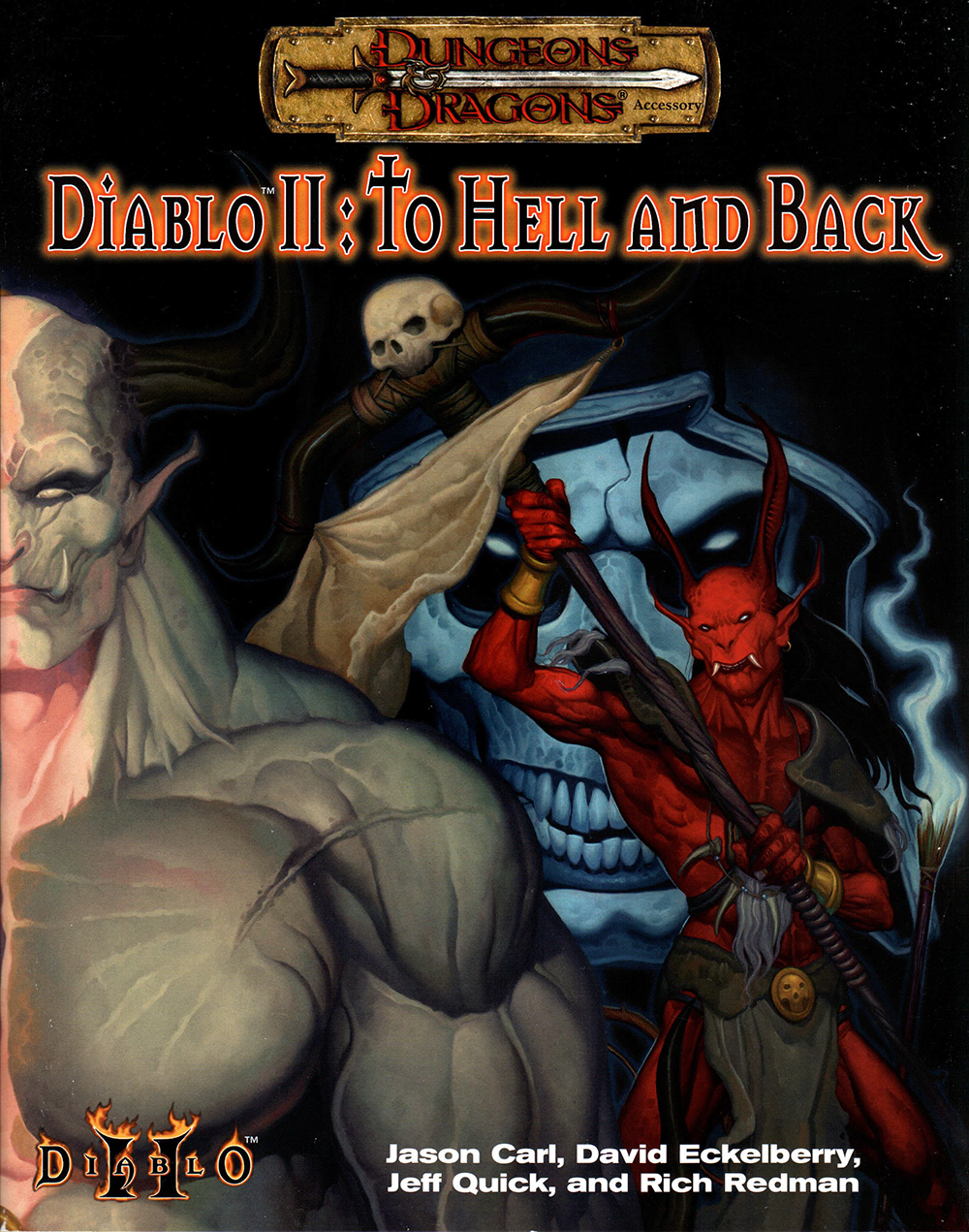Although not as strong as The Sunless Citadel or The Forge of Fury, The Standing Stone mixes a strong premise with some daring design decisions to produce a solid module.
Review Originally Published May 21st, 2001
When it comes to 3rd Edition modules, Wizards of the Coast has established a strong track record with modules such as The Sunless Citadel and The Forge of Fury — each of which, in my opinion, is destined to become a classic. So the only question in my mind when I sat down to read John D. Rateliff’s The Standing Stone, a module for 7th level characters, is whether or not it could stand up to its remarkable predecessors.
The short answer is: No, it couldn’t.
On the plus side, even Mark McGwire can’t hit it out of the park every time. That doesn’t mean you won’t take his singles when they come.
PLOT
Warning: This review will contain spoilers for The Standing Stone. Players who may find themselves playing in this adventure should not read beyond this point.
A tiefling sorceror named Dyson has unlocked the ancient druidic magic inscribed upon the stone circles which surround the small town of Ossington. (For those of you familiar with the real world stone circles of England, Ossington is essentially Avebury with the stone circles and the avenue in slightly better condition.) These magics have allowed him to form an alliance with extraplanar forces of evil, and conceive a plan in which the animals of the forest can be transformed into humanoid form – a powerful staging force for a demonic invasion into our world.
Over the past few months, Dyson has killed almost all of the original villagers and replaced them with his faux humans and halflings. His actions have not gone entirely unnoticed, however: He has angered the local wild elves, and he has been forced to slay a visiting paladin who began to suspect the truth. In response, he crippled the wild elves by inviting them to a parley and then treacherously betraying their leaders. The body of the paladin he has dumped in a tarn at the foot of another local monument: Red Horse Hill (based on the ancient mound-building traditions of Native Americans).
Dyson’s murderous actions have taken their toll: The paladin has risen as a member of the undead, and ruthlessly hunts down any faux humans who wander beyond the protection of the ancient stone circles. The remaining wild elves, in turn, ambush any who escape the horseman. As a result, the villagers have been unable to plant their fields or tend their crops – and now, having exhausted most of their larders, they are slowly starving.
Enter the PCs, who are duped by Dyson into believing all the wrong things: After all, there is a ghost hunting down “innocent” villagers, right? And there are a group of wild elves whose atrocities (in the form of dead bodies with elven arrows in them) are well documented. Dyson will do his best to get the PCs to rid him of his enemies, while simultaneously continuing his demonic work. If all else fails, he will attempt to distract them with tales of yet another local fixture: The Great Barrow, where an ancient warlord rests with his undead protectors.
STRENGTHS
I have to admit that, right from the start, The Standing Stone struck a positive note for me: For several months now, I have been wanting to develop an adventure in which the PCs are duped by evil villagers into going after the good guys. And here it is. It’s a good twist on a familiar concept, and forms a solid foundation for an adventure.
Another nice feature here is Rateliff’s mixture of a variety of elements in building his adventure: Demonic pacts, ancient druidic magics, stone circles, burial mounds, lost souls, elven vengeance, even a tinge of The Island of Dr. Moreau thrown in for good measure. Nor does Rateliff overlook the importance of providing a nice selection of adventure hooks for getting the PCs involved in this dynamic scenario and environment.
Although largely an overland adventure, The Standing Stone also features a minor dungeon: The Great Barrow, in which the Warlord Shainath lives on as a member of the undead. Rateliff makes a rather daring choice by rendering this as, essentially, a random dungeon environment. While I was initially skeptical, I was astonished to discover just how well this works. Rateliff succeeds at manipulating a minimal amount of text into a very rewarding dungeon-delving experience. Where other author’s might have ended up compromising the complexity of the Barrow in deference to the space limitations of the module, Rateliff rises to the occasion.
WEAKNESSES
In reading The Standing Stone I am left with the indelible suspicion that it has been seriously compromised by its editors. For example, several pieces of background information are noticeably absent, despite the fact that they are implicitly alluded to elsewhere in the text. Although the result is not crippling to the adventure, its structure appears to be significantly weakened. (Of course, my supposition here may be incorrect. Whatever the case, however, there are things which should be here which aren’t – and that weakens the adventure.)
The boxed text is another weakness here. Quite frankly, it’s horrid. Besides being, in general, a textbook example of poor writing, it actively undermines some of the module’s best qualities by treating objects of ancient mystery and magic with a stunning colloquialism.
There are also some gaps in plausibility to be found here. For example, the conceit that an entire forest has been depopulated by Dyson creating 80 or so faux humans and halflings borders on the absurd. (Perhaps we are meant to assume that a multitude of animals must die for every one success?)
The module also suffers from the simple reality that it’s far too deadly for the 7th level characters it is supposedly designed for. And Rateliff (or his editors) should really know better, considering that the lowest Encounter Level he assigns in the course of the entire adventure is EL 9. My “favorite” bit is when he actually assumes that four 7th level characters can take out four NPC villains ranging from 8th to 16th level, when those NPC villains are accompanied by more than 30 angry villagers.
The worst fault to be found here, however, comes from the module’s conclusion: Although, technically, a mystery in which the PCs are supposed to figure out what Dyson is up to, there is really no way for them to solve that mystery until after the adventure is completed (by reading through Dyson’s notes). This type of thing drives me nuts. You shouldn’t have to wait until after you’ve beaten the bad guy to know why you were trying to beat him in the first place.
CONCLUSION
The Standing Stone is a solid adventure, built on some really great concepts and developed within a locale with an intriguing history and magic about it. Despite its structural weaknesses, I found it to be a more than worthy addition to a D&D campaign – and easily salvageable from its unfortunate weaknesses. If this is the worst that WotC can produce, then I remain confident that they’ll continue seeing my hard-earned cash for years to come.
Style: 4
Substance: 3
Authors: John D. Rateliff
Company: Wizards of the Coast
Line: Dungeons & Dragons
Price: $9.95
ISBN: 0-7869-1838-1
Production Code: WTC11838
Pages: 32
Hey. Past-Justin. Quick question: Do you think the hill with a horse carved into its side might be inspired by the Uffington White Horse, from the same cultural heritage as the druidic stone circles? And which was clearly the inspiration for the cartographer’s illustration in the book?
“Nope. Definitely Native American mounds.”
Sigh.
This is mostly interesting as a reflection on how every reader (including you!) brings their own POV to what they read. I had visited Avebury. I had visited the works of the Native American “Mound Builders.” I had not visited the Uffington White Horse. (I think I would have at least been aware of it in 2001, but perhaps not.) If past-me had visited the Nazca lines in Peru, perhaps I would have instead confidently assumed they were our shared point of reference.
I was probably also being influenced by my personal predilection for cultural mash-ups as a source for inspiration for fantastical settings. It was more exciting to imagine Native American mound builder traditions and druidic stone circles both being sources of inspiration, rather than just a straightforward copy-paste druidic theme.
In any case, my suspicion that the later D&D Adventure Path modules were being compromised by the limited page count — either due to the designer cutting corners to make stuff fit or editors slashing the text after the fact — only grew to a certainty as the series continued. The scope of high-level adventures tends to expand, and in D&D 3E even the size of the stat blocks would grow significantly and consume more and more space at higher levels. Where this was somewhat worrisome in The Standing Stone, it would become a serious issue for the subsequent installments.
For an explanation of where these reviews came from and why you can no longer find them at RPGNet, click here.
















